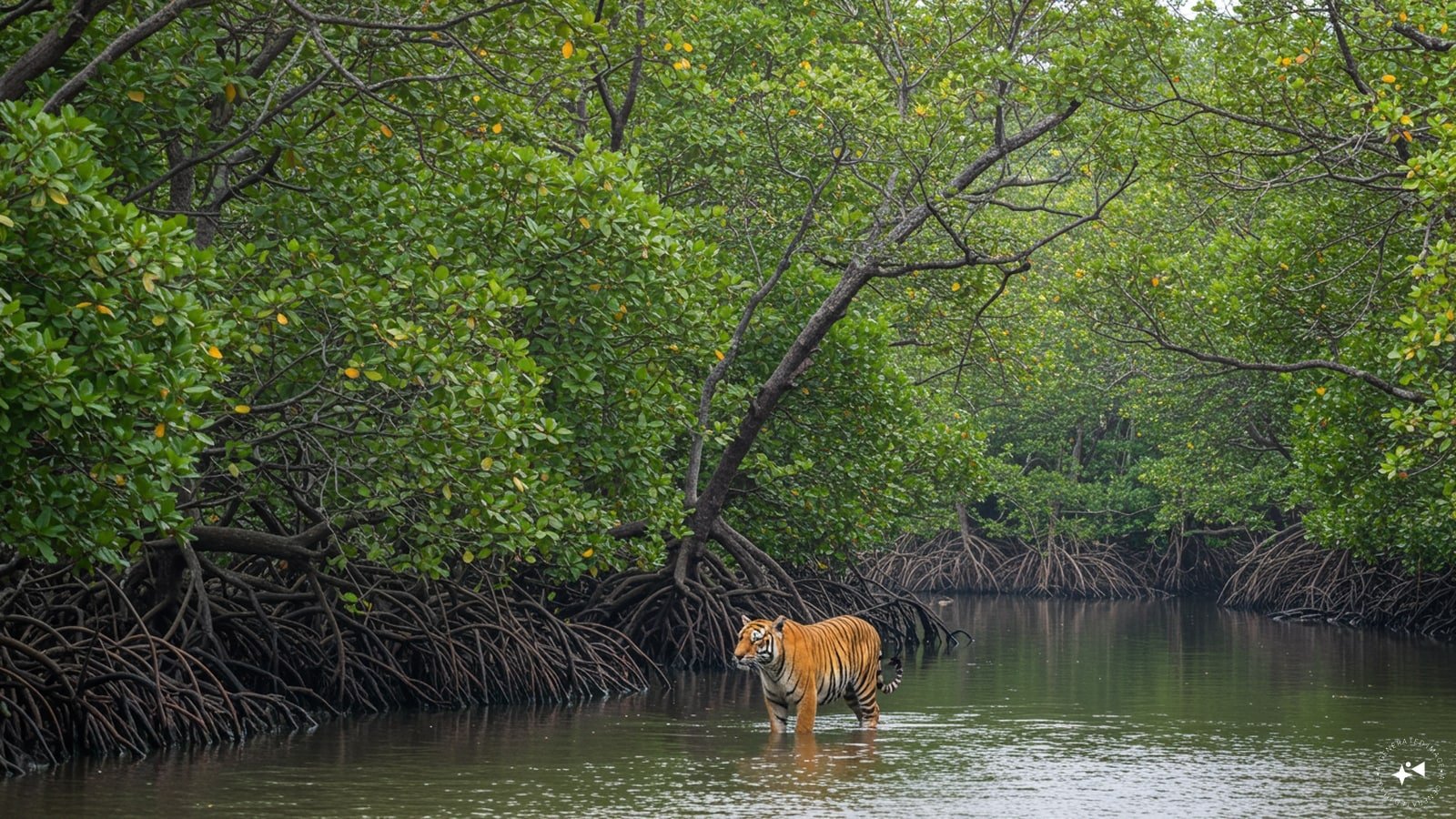Last Updated:June 03, 2025, 13:13 IST
The Forest Department has imposed a restriction on all human activity in the Sundarbans for three months in a bid to revitalise the ecosystem.
The closure puts a ban on all human activities – including tourism and fishing – for three months. (AI Generated Image)
Home to the largest mangrove system in the world and the Royal Bengal Tiger, West Bengal’s Sundarbans has been closed for tourists for three months. The Forest Department has imposed a restriction on all human activity in a bid to revitalise the ecosystem of the forest.
From June 1 to August 31, all human activities – including tourism and fishing – are strictly prohibited across the Sundarbans as part of an annual closure aimed at conservation. Now in its third consecutive year, the ban begins in June instead of July to better align with the breeding season of both aquatic and terrestrial species. This strategic timing provides a safe, undisturbed environment for wildlife and follows the conservation guidelines outlined in the Integrated Resources Management Plan (IRMP).
Md Rezaul Karim Chowdhury, Divisional Forest Officer (DFO) of the Sundarbans East Forest Division, said, “If we can keep the forest quiet during this period, it will significantly enhance breeding activities, especially for aquatic species. If the ban is effectively implemented, the fish population and overall wildlife in the forest will thrive.” The official also noted that patrolling activities will be intensified during this period to prevent any form of intrusion, poaching, or illegal activities in the protected areas.
The Sundarbans, a UNESCO World Heritage Site, is the world’s largest mangrove forest, spanning parts of the eastern Indian state of West Bengal and southern Bangladesh. Covering over 10,000 square kilometres, this unique ecosystem is home to a rich diversity of flora and fauna, including the iconic Royal Bengal Tiger, estuarine crocodiles, spotted deer, and a wide variety of bird species. Crisscrossed by tidal rivers, creeks, and mudflats, the Sundarbans plays a vital role in coastal protection, carbon storage, and sustaining the livelihoods of local communities through fishing and honey collection.
Home to 219 known aquatic species and a wide variety of terrestrial wildlife, many species that depend on the June-July period for breeding and reproduction. The seasonal closure of the forest during these months is seen as vital for allowing natural regeneration to take place without human disturbance.
- Location :
Delhi, India, India
- First Published:
#Heres #West #Bengals #Sundarbans #Shut #Tourists #Months



